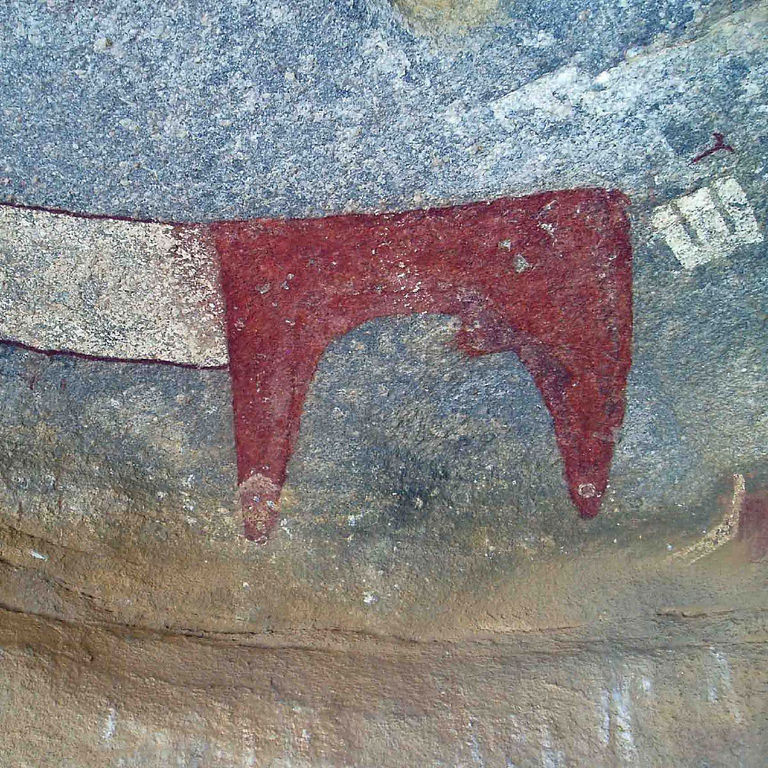Somali Architecture has undergone significant shift from early Medieval to Postmodern era. Shortly after Hijra, spread of the Islamic wave stimulated a transformation in the architectural landscape of the country. Inspired from Arabia and Persia, drystones got replaced by coral stones, red bricks and limestone in buildings. The dilapidated ruins of historical structures became the foundation for building Mosques during the Islamic medieval era.
Less is known about Medieval Somali Architecture as compared to other global architectural landscapes between five to fifteen century. During the medieval era, homes were built in an interconnected style and referred to as “Palaces”. Songo Mnara, a Swahili town in the medieval era located along the Eastern coast spanning across Somalia and Mozambique, has strong architectural significance during this period. During the Medieval era ancient mosques, palaces, small tents and graveyards were built out of coarse coral stones, limestones or redbricks. Small thatched huts constructed from palm leaves along with woven palm mosques spread across Songo Mnara. Trunks of Baobabs and coconut palm leaves were utilized as local materials in Somali Architecture. Towers and Light Houses also occupied central role in medieval Somali architecture. Almnara tower, Dar llalo and Mogadishu stone towers were constructed during this era.
Among the various styles of buildings were fortresses and castles, built by the Medieval Ajuran Sultanate Engineers. Unique style fortresses were also built during the medieval period referred to as Martellos. Martello style forts stood up to forty feet, were built in a round shape and had walls built out of stone masonry. Other fortresses built across the Dervish State were thick walled and surrounded by greenery as well as guard houses. The distinctive feature of Somali Mosques that made them stand apart from other mosques in East Africa during the Medieval period included Minarets. Minaret is a typical pillar style incorporated within the architecture of mosques that is anchored within or opposite to a Mosque. The foundational structure of a Minaret includes a shaft, a cap and a head. The cap of a Minaret is onion shaped and it functions as a focal point for Azan.
The Arba’a Rukun is the only mosque of its type with Minarets across East Africa. In contrast, the Fakr-ad Din Mosque is built in Mihrab style out of coral stones and limestones. A Mihrab is an indentation or deep carving within the wall of a mosque that acts as a focal point for the direction of Kaaba (Qibla). It is also called “Qibla Wall.” Architecturally unique styles of buildings were developed within stone cities during the medieval period. The concept of Shrines and Domes prevailed across Northern Somalia as medieval shrine architecture. A Shrine is a place of respect for religious leaders in order to commemorate their sacrifices. A dome is an architectural artifact representing the hollow void within a sphere. These shrines were built in pillar-tomb style to honor the burial places of Somali kings and ancient predecessors. Pillar Tomb Style of buildings refers to the integration of pillars into tomb structures.
The early modern period saw little shift in use of materials and styles in Somali architectures. However, a new
material called cement was heavily utilized in the building of forts, castles and palaces during this era. Shifting perspective towards the postmodern era, refers to innovations made by fusing with medieval architecture. European, American and Chinese influences further altered the Architectural landscape of Somalia, incorporating new materials and styles into it. A wave of decentralization also spread across the Somali architectural landscape during the Postmodern era, sprouting urban hubs across the region. The latest wave of construction companies has infiltrated these hubs, building modern style buildings. The materials utilized in building post- modernist style structures include use of glass, chrome and steel.
Postmodern style architecture incorporates use of cutting edge construction technologies from glass, steel, chrome and cement to buildings. Adopting the minimalistic approach of modern style, postmodern style architecture focuses on creating a harmonious blend of historical and unusual materials in Somali buildings, that spark up imagination and add to their aesthetic. Also referred to as “fantasy style architecture,” it eliminates excessive use of decoration and offers exquisite visual delights. Postmodern style buildings have revamped the architectural landscape of Somalia. Postmodern architecture has given food for thought to look for new ways of building hotels, mosques, cathedrals and homes in Somalia.
The Somali architectural landscape has stayed under wraps despite its historical value. After centuries of being neglected, Somali architecture has finally reincarnated. There is finally a ray of hope with the development of new construction projects and redevelopment of historical Sumali buildings. Furthermore, the explosion of modern architecture has infused added value to Somali architecture. Inspired from the Arabian and Persian peninsula, the region has much to offer in the construction sector. It is a point of despondence, that the region is currently facing countless challenges. Continuous research initiatives need to be carried out to uncover the root cause of these challenges and rebuild this archaic region to great heights once again.










